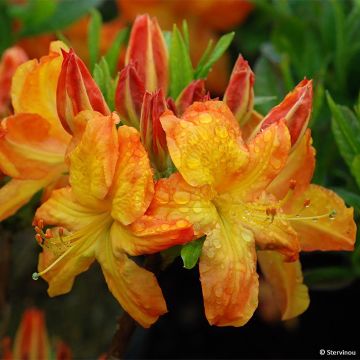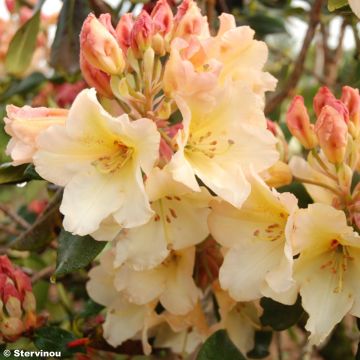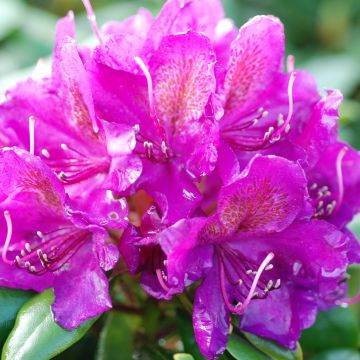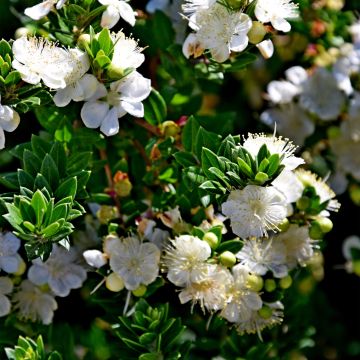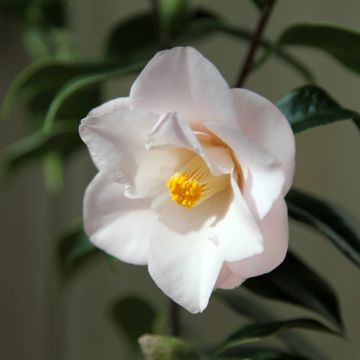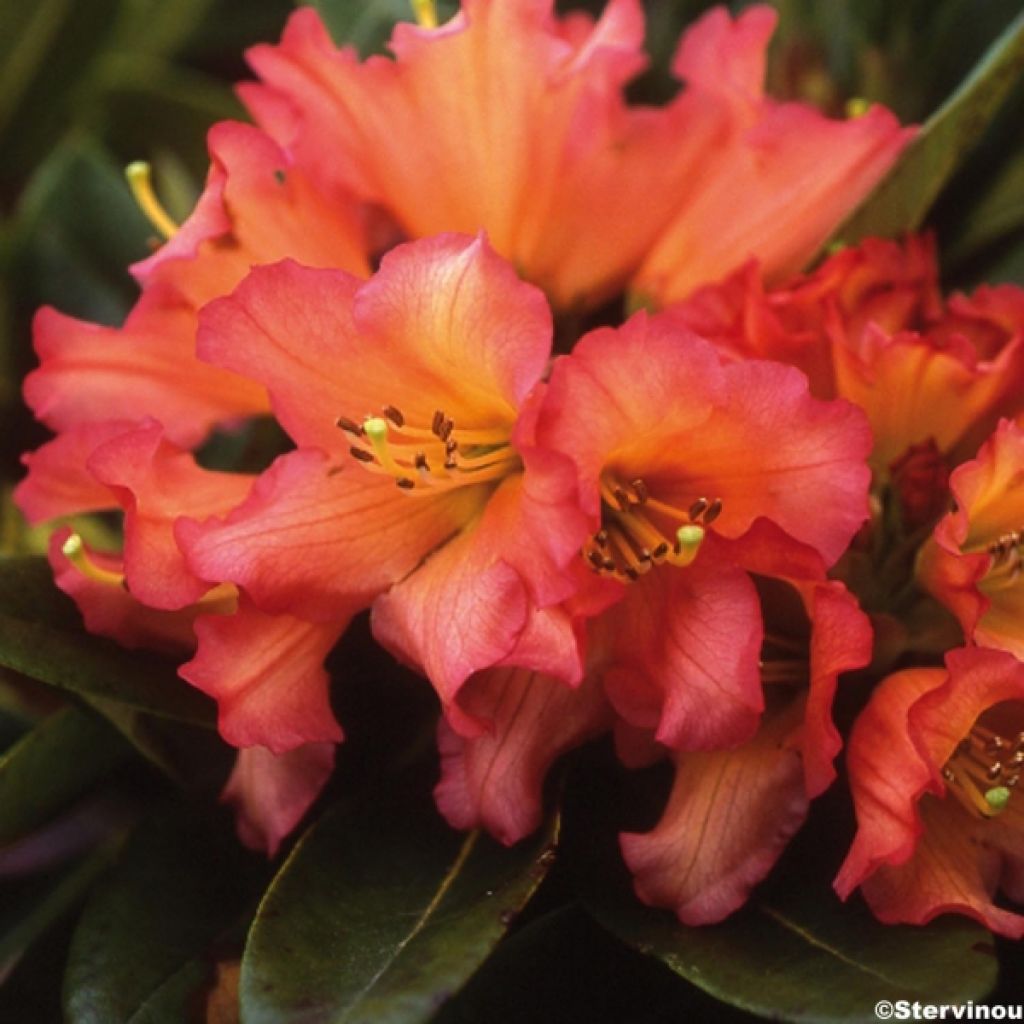

Rhododendron Unique Marmalade - Rhododendron hybride
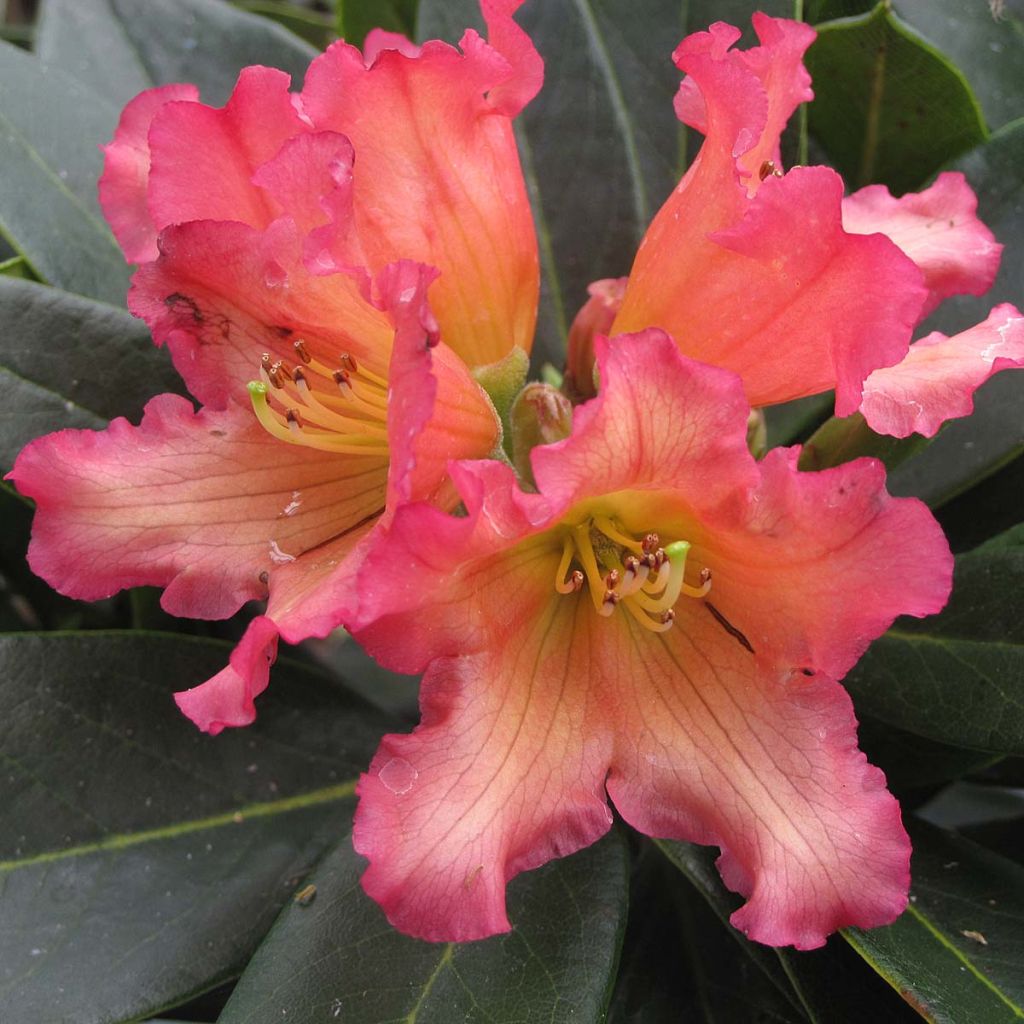

Rhododendron Unique Marmalade - Rhododendron hybride
Rhododendron Unique Marmalade
Rhododendron Unique Marmalade
Rhododendron
Parcel arrived two days after ordering, in very good condition. The young plants are well protected and in excellent health.
Genevieve P., 14/10/2017
Special offer!
Receive a €20 voucher for any order over €90 (excluding delivery costs, credit notes, and plastic-free options)!
1- Add your favorite plants to your cart.
2- Once you have reached €90, confirm your order (you can even choose the delivery date!).
3- As soon as your order is shipped, you will receive an email containing your voucher code, valid for 3 months (90 days).
Your voucher is unique and can only be used once, for any order with a minimum value of €20, excluding delivery costs.
Can be combined with other current offers, non-divisible and non-refundable.
Why not try an alternative variety in stock?
View all →This plant carries a 24 months recovery warranty
More information
We guarantee the quality of our plants for a full growing cycle, and will replace at our expense any plant that fails to recover under normal climatic and planting conditions.
Would this plant suit my garden?
Set up your Plantfit profile →
Description
Rhododendron 'Unique Marmalade' is a recent variety with evergreen foliage that decorates the garden all year round. It will surprise you with its spring flowering, dominant in orange, changing from red to pink at the tips of the petals. This remarkable bush will be ideal for flower beds or containers.
Resulting from the crossing between the Rhododendron 'Orange Marmalade' and the Rhododendron 'Unique', the Rhododendron 'Unique Marmalade' forms an upright habit, reaching 1.2m (4ft) in height with a 1m (3ft) spread. Its evergreen leaves are dark green and elliptical in shape, leathery and elongated, ending in a rounded point. They have a prominent central vein. During the months of April and May, this Rhododendron offers a flowering in corymbs of 6 to 12 flowers. These flowers, dominant in orange, gradually evolve towards red and pink as one approaches the tips of the petals. With its warm-coloured flowering, the Rhododendron 'Unique Marmalade' will brighten and bring a touch of originality to shaded areas.
The Rhododendron 'Unique Marmalade' is hardy down to -15°C. It prefers a semi-shaded exposure. Slow-growing, this bush likes fresh, humus-rich and well-drained soils with an acidic tendency.
The Rhododendron 'Unique Marmalade' will be ideal in the middle of a flower bed, in the undergrowth or as a standalone, but always in semi-shade. It will decorate your garden all year round and brighten it. In spring, it will be adorned with remarkable and luminous flowers in shades of orange, red and pink against its dark green foliage. Plant it on a slope or in a rock garden in the company of Ferns, Pieris, Heathers, Kalmias, Japanese Azaleas, and Japanese Maple.
Report an error about the product description
Rhododendron Unique Marmalade in pictures




Plant habit
Flowering
Foliage
Botanical data
Rhododendron
Unique Marmalade
Ericaceae
Rhododendron
Cultivar or hybrid
Other Large Rhododendrons
View all →Planting and care
Plant the Rhododendron 'Unique Marmalade' in a semi-shaded position, protected from cold and drying winds, in a moist, humus-rich and light soil, with a tendency towards acidity. Like all plants that prefer acidic soil, it does not tolerate limestone soils or heavy soils that become waterlogged in winter. Dig a hole three times larger than the pot. Soak the root ball in non-limestone water and plant the bush at the collar level, in a mixture composed of leaf compost, gravel or pumice, and loam. Water generously and keep the soil moist in summer. Azaleas and Rhododendrons have a shallow root system. Therefore, they are susceptible to long periods of drought. That's why it is recommended to enrich the soil with humus and water abundantly during dry periods. In addition, this root system is not very strong, which is why it is essential to lighten heavy soils with draining materials (gravel, pumice, clay pellets) at planting. Apply a mulch of shredded pine bark around the base of the bush every spring to keep the soil cool while maintaining an acidic pH. Maintenance involves removing faded flowers in summer and clearing the plant of dead branches. Azaleas and Rhododendrons can sometimes be attacked by weevils, which eat the edges of the leaves and rootlets, as well as the notorious "rhododendron beetle," which rarely causes severe damage. Yellowing of the leaves (chlorosis) in Rhododendrons indicates poor assimilation of iron from the soil and can lead to premature death of the plant. While limestone is often the cause, poorly drained soil or a deeply planted root ball can also explain the phenomenon.
Planting period
Intended location
Care
-
, onOrder confirmed
Reply from on Promesse de fleurs
Similar products
Haven't found what you were looking for?
Hardiness is the lowest winter temperature a plant can endure without suffering serious damage or even dying. However, hardiness is affected by location (a sheltered area, such as a patio), protection (winter cover) and soil type (hardiness is improved by well-drained soil).

Photo Sharing Terms & Conditions
In order to encourage gardeners to interact and share their experiences, Promesse de fleurs offers various media enabling content to be uploaded onto its Site - in particular via the ‘Photo sharing’ module.
The User agrees to refrain from:
- Posting any content that is illegal, prejudicial, insulting, racist, inciteful to hatred, revisionist, contrary to public decency, that infringes on privacy or on the privacy rights of third parties, in particular the publicity rights of persons and goods, intellectual property rights, or the right to privacy.
- Submitting content on behalf of a third party;
- Impersonate the identity of a third party and/or publish any personal information about a third party;
In general, the User undertakes to refrain from any unethical behaviour.
All Content (in particular text, comments, files, images, photos, videos, creative works, etc.), which may be subject to property or intellectual property rights, image or other private rights, shall remain the property of the User, subject to the limited rights granted by the terms of the licence granted by Promesse de fleurs as stated below. Users are at liberty to publish or not to publish such Content on the Site, notably via the ‘Photo Sharing’ facility, and accept that this Content shall be made public and freely accessible, notably on the Internet.
Users further acknowledge, undertake to have ,and guarantee that they hold all necessary rights and permissions to publish such material on the Site, in particular with regard to the legislation in force pertaining to any privacy, property, intellectual property, image, or contractual rights, or rights of any other nature. By publishing such Content on the Site, Users acknowledge accepting full liability as publishers of the Content within the meaning of the law, and grant Promesse de fleurs, free of charge, an inclusive, worldwide licence for the said Content for the entire duration of its publication, including all reproduction, representation, up/downloading, displaying, performing, transmission, and storage rights.
Users also grant permission for their name to be linked to the Content and accept that this link may not always be made available.
By engaging in posting material, Users consent to their Content becoming automatically accessible on the Internet, in particular on other sites and/or blogs and/or web pages of the Promesse de fleurs site, including in particular social pages and the Promesse de fleurs catalogue.
Users may secure the removal of entrusted content free of charge by issuing a simple request via our contact form.
The flowering period indicated on our website applies to countries and regions located in USDA zone 8 (France, the United Kingdom, Ireland, the Netherlands, etc.)
It will vary according to where you live:
- In zones 9 to 10 (Italy, Spain, Greece, etc.), flowering will occur about 2 to 4 weeks earlier.
- In zones 6 to 7 (Germany, Poland, Slovenia, and lower mountainous regions), flowering will be delayed by 2 to 3 weeks.
- In zone 5 (Central Europe, Scandinavia), blooming will be delayed by 3 to 5 weeks.
In temperate climates, pruning of spring-flowering shrubs (forsythia, spireas, etc.) should be done just after flowering.
Pruning of summer-flowering shrubs (Indian Lilac, Perovskia, etc.) can be done in winter or spring.
In cold regions as well as with frost-sensitive plants, avoid pruning too early when severe frosts may still occur.
The planting period indicated on our website applies to countries and regions located in USDA zone 8 (France, United Kingdom, Ireland, Netherlands).
It will vary according to where you live:
- In Mediterranean zones (Marseille, Madrid, Milan, etc.), autumn and winter are the best planting periods.
- In continental zones (Strasbourg, Munich, Vienna, etc.), delay planting by 2 to 3 weeks in spring and bring it forward by 2 to 4 weeks in autumn.
- In mountainous regions (the Alps, Pyrenees, Carpathians, etc.), it is best to plant in late spring (May-June) or late summer (August-September).
The harvesting period indicated on our website applies to countries and regions in USDA zone 8 (France, England, Ireland, the Netherlands).
In colder areas (Scandinavia, Poland, Austria...) fruit and vegetable harvests are likely to be delayed by 3-4 weeks.
In warmer areas (Italy, Spain, Greece, etc.), harvesting will probably take place earlier, depending on weather conditions.
The sowing periods indicated on our website apply to countries and regions within USDA Zone 8 (France, UK, Ireland, Netherlands).
In colder areas (Scandinavia, Poland, Austria...), delay any outdoor sowing by 3-4 weeks, or sow under glass.
In warmer climes (Italy, Spain, Greece, etc.), bring outdoor sowing forward by a few weeks.






























